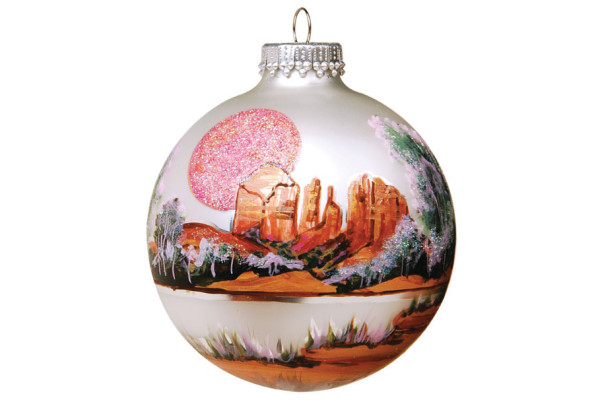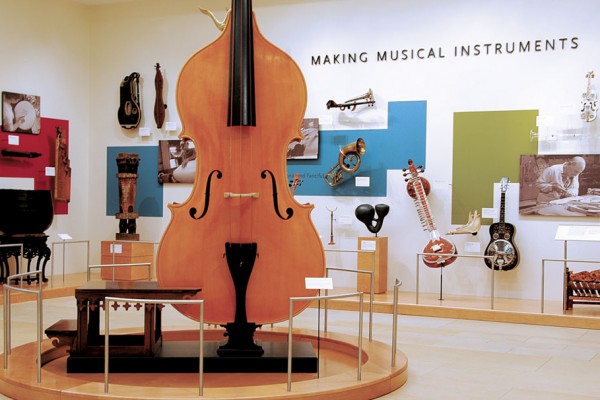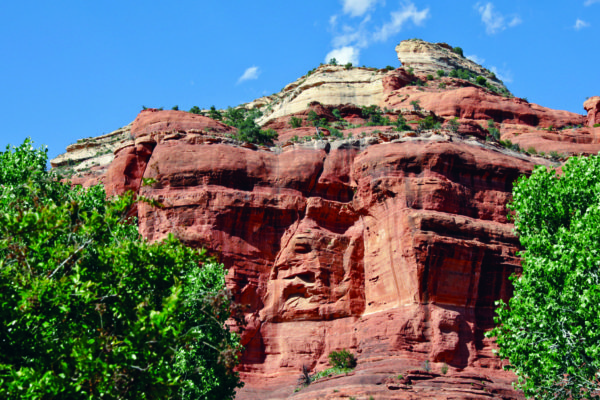Continued (page 11 of 13)
Let’s talk about those subtle nuisances in the character’s expressions. Those expressions really told us a lot about what happened in the character’s pasts. How do you coax that out of an actor?
AB: It needs to be in the script. There [are] a lot of lines in the script that made things more obvious [and those] didn’t wind up in the movie. Once the movie was performed, you’d see things on [the actor’s] faces that told us we could cut lines from the movie. But let’s not take away anything from the actors. They were really good. What’s the secret? Get good actors. That’s one thing that almost everyone who sees the movie says: They really like the actors.
SM: The film’s running time is one hour and 24 minutes – that’s really short compared to most feature films today, but it was the perfect pace for this movie. It held our interest from beginning to end.
How important is a film’s running time, and how involved is the director in that decision?
AB: We like short movies.
SA: We tried to write a very tight script. When we edited, there were several exchanges and three full scenes that we dropped. It wasn’t that the performances weren’t good; they just reiterated certain statements that the characters had already made.
AB: Or connections that would be more fun for the audience to make rather than have it handed to them.
SA: That’s one of the harder parts: killing snippets of a performance that you love.
AB: No one told us it had to be under 90 minutes.
SA: It was the editor hat saying we didn’t emotionally need a scene.
AB: Some were heartbreaking to take out.
Talk to us about the importance of film festivals in today’s day and age when it seems like the only thing that interests Hollywood are special effects, sequels and remakes.
SA: It’s interesting because we spent an incredible amount of time on the festival circuit with our short film. To be able to see your work in front of a real audience is an incredible privilege and learning lesson. You have a sense of on-going collaboration. When you walk into the office of an amazing film festival – and Sedona is very much that – you see all these people who are working their fingers to the bone for your movie and all the movies that are there. You realize your crew didn’t stop the day you wrapped you movie. The people of the festival are part of your crew. And when you debut in front of the audience, you realize [they are part of your crew.]
Don Hahn: Waking Sleeping Beauty
Waking Sleeping Beauty is no fairy tale. It’s the true story of how Disney regained its magic with a staggering output of hits between 1984 and 1994, a 10-year period that the documentary’s director, Don Hahn, calls “a perfect storm of people and circumstances that changed the face of animation forever.” Hahn began working at Disney studios in 1976 when he was only 20 years old. He went on to produce such hits as Beauty and the Beast (the first animated film to receive a Best Picture Oscar nomination); The Nightmare Before Christmas; The Lion King; The Hunchback of Notre Dame; and the 2006 short, The Little Match Girl, which earned Hahn his second Oscar nomination. Hahn spoke to Sedona Monthly via phone and admitted that he’d never been to Sedona but couldn’t wait to see the red rocks.
Sedona Monthly: Why did you decide to make Waking Sleeping Beauty? Why do you think enthusiasm for animation waned in the late 70s/early 80s?
Don Hahn: I think if you’re lucky, once in a lifetime you live through a special time. The people were what were so intriguing. For me, the project started out with Peter Schneider, who I hadn’t seen in years. We crossed paths again, went out for coffee and started talking. Peter particularly wanted to make a movie telling the story. I was suspicious at first, although I knew it was amazing and juicy and contentious and interesting – all the things you needed for a good story. If we did it, we would have to do it with such honesty – that was the only way I wanted to be a part of it. Through a series of events, it happened we could do it with the kind of candor we all thought we needed to do it with. I think [animation waned] simply because of the fashion business. You could not sell an animated film at that time. If you did, it was My Little Pony or Carebears – something associated with a product line. [Animated films] were very much associated with children and marginalized to things for young children. Disney films had an adult audience, but it was seen as something you took the kids to while you tolerated it. Also, the vitality of the industry waned. [Animation] was at a peak when it first began in the ‘30s. It’s a very similar period to [Waking] Sleeping Beauty. They made five movies and built a building then it all fell apart. The war started and things changed so quickly. There had been some other great periods – the ‘50s when Walt made Peter Pan and Cinderella and Alice in Wonderland. It just went out of fashion and the creativity wasn’t as vital. You had a group of men and women who were at the end of their careers.
The way this documentary was filmed struck us as unique. Rather than seeing the interviews as they are happening, we’re seeing footage from the ‘80s and ‘90s. What made you decide to do that? And was the video camera always on in the animation department?
I had seen a lot of DVD bonus material where you had old guys reminiscing [laughs], and I didn’t want to do that. It would have been a puff piece if we’d done that. Peter and I had the benefit of being in the room during this period of time. There had been books, Disney War, about this period of time that we both felt got it wrong. Between the two of us, we saw the artistic and executive sides of this story. We wanted to tell it by putting you in the room. We had some rules: no talking heads; no old guys reminiscing; tell us something we don’t know; and show us something we haven’t seen. We decided to use the scratchy old home movies and the stuff that had accumulated in our garages. In a funny way, that was the compelling footage. There was a video camera always on, and it wasn’t supposed to be. It was completely against company policy to film anything inside the animation department. The irony is that this movie is made from contraband material. It shows the fun and joy of making these movies. It was joyful.



